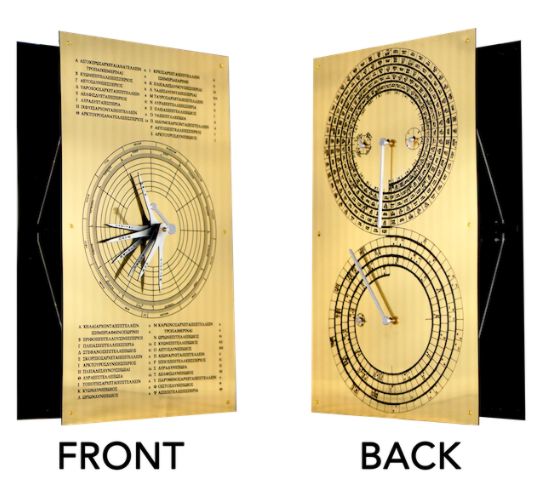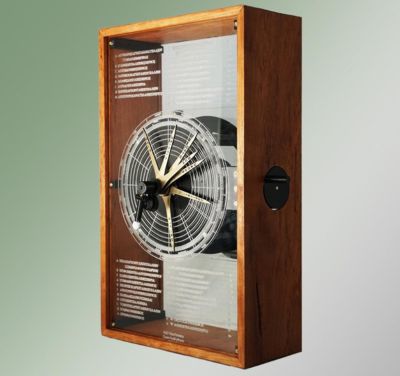| Open Antikythera on Kickstarter |
| Written by Sue Gee | |||
| Sunday, 06 August 2023 | |||
|
Regarded as the first analogue computer and named for the Greek island where it was found in a sunken ship, the Antikythera Mechanism is over 2000 years old. Now a functioning replica has been built that uses 3D printed parts and there's a Kickstarter campaign for it. Kickstarter is a matchmaking service between creators of a product or service and people, aka backers, who want to see projects materialize and who are prepared to pledge financial support in advance. The Columbus-based S&T Geotronics behind the Open Antikythera project already have two successful Kickstarters for replica technology to their credit - Open Enigma in 2014 and Open DSKY in 2018. This video introduces the new Kickstarter Campaign.
If you've never heard of the Antikythera Mechanism, an important part of the collection of the National Archaeological Museum of Athens, here's some background. In 1900, a Greek sponge diver named Elias Stadiatis discovered the wreck of an ancient Roman cargo ship off the coast of Antikythera island in Greece. Divers recovered all kinds of artifacts from the ship and a year later, an archaeologist named Valerios Stais was studying what he thought was a piece of rock recovered from the shipwreck when he noticed that there was a gear wheel embedded in it - indicating that it was ancient mechanical device. It was fifty years later that Derek J. de Solla Price, a British science historian started investigating the theoretical workings of the device. Based on X-ray and gamma ray photographs of the fragments, Price and physicist Charalambos hypothesized that the mechanism had been used to calculate and predict the motions of stars and planets and to track the four-year cycle of athletic games, making it the first known analog computer. It was estimated that the mechanism came from the late second century BC or the early first century BC but recent research by a team led by Aristeidis Voulgaris has found that, like other mechanical calendars, the Antikythera mechanism has a “day zero,” a minimum possible date that it can display. By analysis of the astronomical cycles the mechanism was designed to simulate, and in particular the saros cycle which is a 223 lunar month cycle of alignments between the Earth, Sun, and Moon, they found that saros cycle 58 had a particularly long annular eclipse which, on 23 December 178 BCE would have been visible at sunrise in the eastern Mediterranean. This, they argued, coupled with facts like the proximity to the winter solstice, the Sun entering Capricorn, and the Moon being new and at apogee, was probably so culturally significant that it could serve as the initial date for calibrating all the mechanisms pointers and dials. Not everybody agrees and some claim that the evidence points even further back, to a start date in the summer of 204 BCE. Back to the replica, S&G has created two models to satisfy different budgets, both of which will be be available in kit form and fully assembled. Top of the range is the "Fully Monty" which has both the front panel which shows the positions of the 5 naked eye planets along with the sun and the phases of the moon and the back panel which displays the Saros and Metonic cycles, along with predicting the future Solar and Lunar eclipses and the location of the next “Olympic” games. Fully assembled and in a wood box this model costs $1800. The smaller, front-panel, UpFront model complete in a wood box costs $1000. After only a few days the goal of $20,000 required for this project to proceed has been met. However, there's a stretch goal of $80,000 which will enable them to produce all of the items they intend to make available and while some of the Early Bird offers have already been snapped up pledging fully price is still an option. The campaign runs until August 31st. More InformationOpen Antikythera Project on Kickstarter Antikythera mechanism on Wikipedia Related ArticlesTo be informed about new articles on I Programmer, sign up for our weekly newsletter, subscribe to the RSS feed and follow us on Twitter, Facebook or Linkedin.
Comments
or email your comment to: comments@i-programmer.info
|
|||
| Last Updated ( Sunday, 06 August 2023 ) |





